– I’m going to basically give you three stages of my life. I’m going to give you one painting from undergraduate school. I’m going to give you three paintings from graduate school. And then I’m going to give you a lot of images since I’ve been in Madison. I have 101 images to go through, so I’ll probably be really fast with some of them. I have a lot of gratuitous studio shots that I’m hoping will amount to sort of enough peripheral information for you to understand what I do. I was born in 1967 outside of Washington, DC. I grew up in Silver Spring, Maryland. I would say that one of the things that really informed me early on as an artist or a young student, art student, were comic books and record albums. At some point I transitioned to just having a vinyl fetish. These are my top 10 favorite records or they were a couple weeks ago. I would say the one record that stands out there is that Sex Pistols record, and I think that was my first introduction to really obnoxious color and it has stuck with me. One of the things about the music scene in DC in the ’70s, ’80s, late ’70s through the mid-’80s, was a really excellent underground music scene. And I was a big fan of the flyers and posters, the gig posters. These posters were all over town. This band Trouble Funk was kind of an amazing band. And two things that stuck for me was the branding and the color. So I think those were things that I carried with me. When I went to art school in Baltimore, the big influences early on, Francis Bacon, Richard Diebenkorn, Henri Matisse, and Giacometti. I was trying to sort of figure out color space, atmosphere, light, multiple sort of light, sources of light. This is a painting that took me the entire fall semester of my junior year in 1987. This is my roommate Burns, Burns Schaefer, which if any of you are planning on having children, Burns is not the best name. I will just tell you, he was a pyromaniac. [laughter] So three paintings from grad school. And the story I tell when I show these paintings, the transition that I went from undergrad to grad, I had a really important moment as an art student where I failed at Pictionary. Completely failed. And I had eight years of training in drawing, four years of intensive in high school art classes and four years of art school, and I could not form an ideogram to communicate in a short amount of time. So it was a really important lesson for me and it recalibrated my kind of whole thinking about how I made art and how I wanted to communicate. So I have three of these small panel paintings that I made as a graduate student in my first semester of grad school. And you’ll notice that they’re actually about 5.5 inches square, about the size of a bathroom tile. And along the bottom of this one there’s a lot of paint buildup. I had what I called the tattoo test. So as I did these symbols, if it didn’t pass the tattoo test, I’d scrape it down and paint another symbol on it. And then here’s one. This one was somewhere between a smiley face and a lake of fire. And this is my meditation on hair loss, premature male pattern baldness. [laughter] So at the time, I was checking and then I just did a painting where I fast forwarded to the last two hairs on my head.
[laughter] So coming to Madison, important lessons for me. I wanted to continue to build a vocabulary of forms. I wanted to stay flexible. I’m a painter that imagines myself working on several projects simultaneously. I try to entertain a healthy form of attention deficit where I’m sort of hyperactive and sort of working on several things. I also know or I’m learning to know when to step away from things. So I have one project in here that I think really failed and I’m trying to give up on it. These are downtown in the mayor’s conference room. Squares, I like the square format. And what actually happened with these is that the man that was managing the space understood the spirit of the work without me having to communicate it to him, and he figured out that he could turn these occasionally so that they had several orientations. And I guess the running joke in the mayor’s office was when he did these conferences on these sort of conferences for television and these were in the background, they would be in different places for different conferences. I use a lot of drawings, sketchbooks. I use, my favorite tool is a Sharpie, fine line or marker, and I like that extra fine marker. I’ll fill up books thematically. I have a really profound moment with a sticker, branded stickers that I’m going to show you in a few slides, but I came through and tried to process it. Some version of a Mickey Mouse head and a smiley face. This painting is owned by the Madison Children’s Museum downtown, so you may see it there. So to speak directly to some of the music, back to some of the music. So this record, “Pink Flag” by the band Wire, I decided that I loved the record so much I wanted to make a painting for every song on the record. So there’s 21 songs on the record, and I had a show. This is in a miniature gallery. So the gallery is called John Erickson Museum of Art. If you Google search my last name and the initials JEMA, you should be able to find some information on this. So there’s one painting for each song on Wire’s “Pink Flag,” and they’re all about the size of a postage stamp. And the way that gallery is designed, it’s designed to photograph, so it looks like the real deal. And then this is a piece of graffiti. Well not really graffiti, but this branded sticker that kind of profoundly affected me. And this is still on that light pole outside of the Humanities building. It’s for the ad campaign for Radiohead’s “Kid A” and “Amnesiac. And I wanted to do some versions of that, so I painted that “no parking” sign that you see the fragment of to the right, and then I put that painting there as a temporary piece of graffiti. The “no parking” sign belonged to a parking kind of alleyway zone to the Pipefitters, which is a place on State Street. I had a really complicated set of phone conversations with the owner of that place, trying to convince him to trade his “no parking” sign for my “no parking” sign because I wanted his old “no parking” sign. It was a very interesting set of conversations. I have a thing for spray paint. I try not to use it too often. It’s not a color to be, it’s not a set of pigments to be trusted, but once in a while I will want something as bright as I can get it. One of the things that I’m really interested in, in the last several years, is color vibration. A vibrating edge, an edge that’s really hard to look at. I call it headache color. I wanted some of the paintings to look like you would want to turn them off or unplug them. And then I will also work in black and white palettes and muted palettes. So this is a two-foot square painting that was cut out of a much larger painting of black and white form.
I’m going to show you a few slides that were from another project dealing with color, language, and landscape. So I did these. This is a six- by eight-foot painting, and I wanted to make a painting that dealt with the ocean as a subject. And I was trying to figure out forms and symbols and fragments of images. So there’s images from different text sources. There’s a Barry Moser wave from “Moby Dick,” and there’s some waves from Japanese wood block prints. The pattern along the bottom in black and white and gray, the underpainting is from an Egyptian drawing. So there’s a lot of information there. And I was trying to make a blue painting without making a blue painting. So I was trying to push all the color just sort of off the blue. So there was the blue ocean painting and then there was the red desert painting. A similar program. Part of me, I think, just wanted to paint a desert. One of the things that I tell people is I hate winter, and part of what I do in my studio is really kind of color therapy way of surviving winter. So, bright, warm places and bright, warm colors are things that I like to imagine. So there’s the red desert painting. And this was around the same time I had silkscreen on a four-foot square canvas. The notations that I made in a notebook when I was preparing for writing sort of just the raw writing for the grant that I applied for the landscape and language paintings, and I wanted to use, go back to the original note. So I had this printed very large. And that’s a detail and it was also a way for me to revisit local color because it’s not a process that I used very often other than in teaching painting and I hadn’t done a lot of it since art school. So the big notebook page, I was trying to match the color of different colors of paper, the difference between blue ink and the blue lines of the notebook, and then the white out where I was taking out the text that I didn’t want. I didn’t want red. The summer that I worked on that painting, I realized that each one of those lines took me two hours, because I was playing parking roulette down near the art lofts. [laughter] And so I would finish and then have to go move my car. So out of the trilogy of blue, red, and yellow paintings, the yellow painting has been the most complicated in that series. So I’ve done two versions of trying to figure out a six- by eight-foot yellow painting, and this is the second one. There’s a chart form that kind of– There’s a grid structure. They’re nine high by 11 across. So I wanted 99 icons. So the center row or the icons that I used repetitively in other paintings, and then there’s sort of a logic that happens with different parts of the painting if you spend the time. And then it does this general fade from light colors to dark colors. So it kind of does a gradation from the top to the bottom, which made it really hard to photograph because the yellow in the background is consistent and then it was hard to get flat. But one thing I would ask you to look at is that typewriter icon sort of up from the bottom on the left side. And then I made another version of that with that head form. I think of the way that I use images and icons is maybe a form of Tourette’s. There’s something kind of stubborn about certain icons, and then I’ll just keep repeating them and repeating them, so that hopefully they become convincing in some way. Here’s an installation of the yellow painting. And then I did some boxes and some color grids. So the form to the– The set of paintings to the right opened something up for me, and that’s something that I’m going to come back to in a minute. In my studio, I like to sort of capture things. I take a lot of photographs. Thankfully I’ve discovered the camera on my phone so I’m not wasting a lot of film anymore. But I’ll take a lot of photographs of random information. I have a thing about picking stuff up off the street for color samples.
So collecting some yellow objects. A couple summers ago I decided to do a series of yellow drawings. So yellow paint on that really obnoxious yellow paper you get in the Xerox shops or the copy shops. And this is that same series of drawings from a different angle so you can see the forms. I draw in a lot of different ways. Another way that I draw are these Sumi-e ink drawings on large sheets of index paper. And with these drawings, I try not to have a program. With some of the sketchbooks, it’s very much a plan to draw monsters or buildings or snakes. I’ll start with a theme. And with these, it’s more of an exercise in listening to music and just responsively drawing. I will at times do versions of print portfolios or mail art and I’ll cut things out, collect things. There’s a photograph in there of a taxidermied dog that I rescued from when they tore this building down. It came out of one of the old buildings here. So I have a taxidermied dog in my studio. Here’s a version of laying out one of the mail art projects. So if you ever get an envelop from me, I promise it’s not anything devious. It will be just some random information that I’m thinking about and sending out into the world. I have a funny story about this painting. This painting is made from a photograph of my old studio, in the window of my old studio, and that studio is probably about 20 yards that way. I had a studio on the second floor of the old safety building here on campus, and I photographed, did a bunch of photographs when I was in that studio. And I was kind of heartbroken when they tore that building down to make this building. But I have this photograph in my archive and at some point I made a large, three-and-a-half- by seven-foot painting from this photograph of this window. And then my colleague, Lynda Barry, started curating the upstairs space up here in WID, and I was able to return that painting to approximately the same place that the photograph was taken. So the image had a chance to kind of revisit where it came from. I will occasionally collaborate with people. This is one of my first attempts at collaboration, and I had a graduate student that was graduating, Trina Smith, and she was going out into the world and she had this painting that she wasn’t happy with from grad school and I knew she was going to wrap it up and, maybe, wrap it up and throw it away. So I gave her enough funding to cover her raw materials, and then I spent some time painting my icons on top of it. I have made paintings of my sketchbook. So this is a three- by four-foot painting of one of those moleskin sketchbooks. The maniacal thing about this painting, the thing I should have just done is had a silkscreen on canvas and left it alone. But I spent the summer covering every bit of silkscreen with either black, white, or gray, so I could feel like I really owned it as a painting. Two versions of this painting, “The Kingdom of Yellow.” This is the smaller one, and then there was a larger one. This one was installed for a while downtown in that building off of the square that you have to pay a parking ticket. I had a few students come back and tell me they’d seen my painting downtown. I have an unhealthy thing for yellow. It’s never going to be sort of a good color for me, but I continue to go back to it. And then I’m going to show you some kind of raw stages for another small project that I did with the music stuff. So a band called The Watchers from Chicago, and their last record was called “Vampire Driver,” and I decided that I wanted to do a series of paintings based on all the songs in that record. So in the foreground of the image there’s index cards and each index card was a set of scribbles that I did listening to each song.
Then I blew them up, I blew them up and then did color samples where I kind of approximated what color the song sounded like. And then I edited some form, some section of the scribble and made little paintings. And I contacted the band to get their permission. We have some mutual friends. And I told them I was having a little show here in Madison of their album, and they seemed very flattered. And I tried in all of my correspondence with them to let them know it was literally a little show, that the paintings were postage size stamp. And they came up, three of them drove all the way up from Chicago for the opening. It was on a little gallery outside of Monroe Street Framing. And so that’s the money shot. And then there it is upstairs. It got to be seen a second time. Oh, and I did not make the gallery. So, full disclaimer, Colgate [inaudible] , former wood student, made the gallery. And the beautiful thing about those wood floors is they’re stir sticks from Starbucks. [laughter] They make the most beautiful wood floors in simulation. I have two children in my life, and over the years I’ve collected little drawings that they’ve made that have been inspiring. And certainly this stage of drawing with kids is an inspiration for me. And then this is some version of the “Harry Potter” stage for my oldest son. And then here’s a series of drawings in a notebook that I’ve done along the theme of monsters. I guess one of the things that I’ve tried to do in a weird way in my life is I’ve tried to reinvent the smiley face. I’ve been looking for an icon. The other icon that I reference is Kilroy was here. I’ve been looking for that kind of icon that you could put into the world, and my thinking about this was pre-Internet. Pre-Internet. So the term I didn’t have at the time or the term I hadn’t fully understood was that expression of something going viral. So I was really interested in trying to find a form that you could just drop into the visual bloodstream and it would just go everywhere. So I’ve been doing color charts of monsters and color charts of buildings. And so this is one of the first color charts with the monsters. And they’re 12 inches square and there’s 77 of them. I think the 77 had something to do with the Talking Heads’ record “Talking Heads: 77. And the way I want them to work is I want them to kind of work like as if you’d just stepped into a store and there was a wall of product and you’re trying to choose what you wanted. I can only speak for myself maybe, but there’s this certain sensation for the vinyl addict of walking into a record store and being exposed to a wall of records and getting to pick. A couple quick public projects. I got invited to do some wall murals for the downtown children’s section of the public library, and I jumped at the opportunity. Sorry I don’t have a better shot, but what I did is I did these double-sided panes on vinyl with enamel. And I was– I knew they weren’t going to give me a huge blue wall or a huge green wall. So I had to figure out how to create a color context for the mark that I wanted to make. So that’s where the double mark happens. So in order to get that blue mark to sing the way that I wanted it to sing, I was able to put a lighter blue mark behind it. And full disclaimer, I only made the paintings. So Jim Escalante, my colleague, photographed them. And Jeff [inaudible] , my project assistant at the time, translated those JPEGs into bitmaps and those bitmaps were sent to the sign company out of Ohio, and then I went and met the man that installed the work and it was nice to meet him. And the compliment he paid me is one of the signs that they had done in their recent history was the Crayola factory in Pennsylvania. And he said that my work held up to the Crayola sign, so I was happy with that. This is a recent project that is on the street right now outside of Festival Foods. So whenever I have the chance to get my work out into the world, I absolutely want to do that. And I’m happy to do that in many ways, shapes, and forms, because really a lot of this work is inspired by street signage and posters and graffiti. And so it’s nice to be able to give back to that, give back to that visual situation in appropriate ways.
And so these two electric boxes come from this painting and this painting. And then I have a story about this painting. So this is a painting that’s done on 8.5 by 11 paper. I do a lot of work in the studio in notebooks and paper, and there’s always this kind of game in my mind of 8.5 by 11 paper translated, 8.5 by 11 inches translated to 8.5 by 11 feet. So I had wanted to figure that out for a long time. So for the last faculty show, I made two versions of that piece, and then I made one on paper in inches, 8.5 by 11, and then one in feet, 8.5 by 11 feet. And because I hadn’t worked that big before and because I didn’t quite understand I was working with a timeline of transport that I didn’t quite trust, I just didn’t know. I was doing my own art handling, which has its potential issues. I made two 8.5- by 11-foot paintings. And so that blue painting had an understudy of the orange painting. And one of the failed projects that I mentioned earlier or the one failed project that I mentioned earlier is this sun scale. It’s to the right of that, these yellow suns. And I’ll show you a couple more of those, but that’s one thing that hasn’t really worked out. And I wasn’t smart enough, like if I could relive that semester of my life or that chapter of my life, I would have negotiated with the museum to swap the blue painting with the orange painting halfway through the faculty show. And I just didn’t do it with enough time, and the faculty show is so taxing for the prep staff, the prepatorial people, the people that have to install that I just didn’t want to torture them any more, so I left it alone. So the orange painting actually was never seen. Studio shot, things in the studio. I really rely on having a space where I can leave things sit for a long time and move things around in my own way. I celebrate a certain amount of chaos and a certain amount of clutter. Early photographs of Francis Bacon, you know, like my early exposure photographs of Francis Bacon’s studio were probably not the best for me in the long run, but I do celebrate a little bit of chaos. And some of that chaos translates into these wall pieces. And so a wall piece, these cluster pieces will be multiple kind of series that are represented, many kind of fragments of different projects that come together. This set of drawings on index cards that was done on a road trip from here to Vermont. And so I did a whole set. It was a whole stack of these different magic markers. And it got me thinking about, like, this kind of rudimentary form I kept drawing over and over again, this stacked type form, and that stacked form turned into these more architectural forms or buildings. And so I did a notebook, a series of drawings in a notebook and I color Xeroxed the notebook and collaged the drawings onto a canvas and picked my six favorites of the buildings and put them on. And I wasn’t quite done with the project. It was sort of brewing and I was trying to figure out what I wanted to do with it. We went to Spain that summer, to Barcelona, and I was just kind of using my camera as a sketchbook. And we walked into a secondhand store and I photographed these leather jackets. And I was starting to figure out I wanted to do some version of a more formal color chart and not the random one that I had done before. I bought a box of crayons, and before I let my son use them, I photographed them just as they came out of the box. And I’ll just show one of these because I had a lot of these, but I was also photographing color charts every time I went into the hardware stores. And at some point I realized that’s what I want to do.
I want to do a painting that works like a color chart. That has a sort of a regimented logic that you could stand in front of and just really, really embrace. So I’m going to show you a few slides from what this turned into. There’s kind of two sides to a room. In the middle section, that’s the most random and mixed up, were the first group of paintings that I made for this. Ultimately, there are 125 in this series. They’re five high. They’re all 18 by 24. They’re the kind of stretchers that you really don’t– You really sort of use in beginning paint classes, the Fredrix stretchers. Just to mention, the piece to the left is not my work. That’s a really interesting artist from Milwaukee, Keith Nelson. And what he was doing, we were in this group show together. This is the Haggerty Museum at Marquette University, and what Keith was doing, Keith Nelson was doing at this point was picking up found fragments of trash and different kind of colored panels and then arranging them in these beautiful arrangements, like a Morandi type palette. And he had that one little moment of red, and I had that little red in my first part of my piece. And then this is the second half. So what happens is that wall transitions from one room to another room and I used that transition, the kind of seam of that transition, to have the color shift. And so I did that, finally did that full spectral kind of paint chip palette. From there, some recent projects. I’ve been doing some paintings for specific sites. So this is at the Madison Museum of Contemporary Art for the last triennial. And the painting was built to fit right inside of that space next to the elevator where there’s this wall between two walls, this kind of transition wall. And full disclosure, I did not make the stretchers. I worked with a former graduate student, Sarah Deppe, and I contracted her out. We did several site visits, and she did most of the labor on getting those stretchers to work on these walls. And then here’s another one. This one I don’t have a better shot, but it runs right on this little wall by the guard desk. And that’s a one-foot painting that’s 14 feet tall. So the tension on that panel is really, like, very problematic because there’s a whole lot of tension from end to end, and I have it on the wall in my studio right now. I have to figure out another way of anchoring it. And this is the tallest painting I’ve ever made. It’s a 16-foot tall painting. I realize now, if I were smarter, I would have just done wall paintings. Like I could have just painted these on the wall. And the museum could have painted over them, and then I wouldn’t have any storage issues. But I’m sort of hardwired to want to make paintings the way that I’ve always made paintings. And oil on canvas, and some of these are acrylic and oil, so the background on these, the fuel colors, the ground colors are acrylic. So just briefly on this series that’s not working out. Sketches of this drawing, index Sharpie drawing of the sun, and then a couple sun paintings. And I may come back to this. I’m still trying to figure out what I want to do, how I want to address the color yellow. And then, recent set of collaborations. A former graduate student that’s now working as the IT man, the IT person at Whitewater, University of Wisconsin-Whitewater, Dale Kaminski had started delivering me these large inkjet prints because they have one of these inkjet printers and they have to run their prints through it occasionally just to calibrate it or whatever. So he gave me one of these to test out, and I put one of my forms on top of it in color and then we kept playing this game.
So far, and these are large panels, they’re probably 36 inches across by four or five feet tall. So it’s really fun for us to do, fun for me to paint on top of them. And I kind of– It was easy for me to put bright orange on top of blue images. So I wanted to make sure it wasn’t just that, so I put in a couple extra ones. So here’s a factory on top of factories. Here is some vague architectural form on top of some photograph of a vague architectural thing. This, you’ll notice if you look closely, there’s a yellow-green on top of a green. So the initial green did not jump. Didn’t work. Didn’t jump. Just kind of totally disappeared. So I let the paint dry and put that color on as the highlight color. And then here is blue as the foreground color and orange as the background color. And this first stage of this series was shown, again with Lynda Barry’s curation here at WID. So two projects that I get to return to WID with this talk. And so these were in the windows right in the corner where Lynda Barry has her drawing space. I was able to do those for– They were up for just about three weeks. One of them that wasn’t seen in that shot was an enamel, double-sided, Mylar enamel painting of this bunny form. And I’ve done a few of those bunny paintings. Three-eared bunny. Then I’ve been doing some snakes. I will occasionally paint on found materials if I find a piece of something left behind. Somebody sort of leaves something behind that looks interesting enough to work with, I’ll work on it. This is a four-foot square painting. There was a mention last night about the tennis ball green or tennis ball yellow. And I was very much thinking about that with this painting. And the other thing that you might not be able to tell from the reproduction is the color has been brayered on. So it has a tooth or a texture of a tennis ball as well. The original snake form was a pot magenta, which honestly terrible against that terrible. So when it dried and after I figured it out, living with it for six months or so, that it was not a good color combination, I used that gray. And I was hoping that gray would also look like the grout in the tennis ball. I wanted this sort of just overall weird tennis thing with this painting. So snakes, I’m still doing snakes. Small, fluorescent orange painting. One of the interesting things with me about using colors over and over again and kind of trying to come up with different color combinations is figuring out sort of how certain colors behave or misbehave or in what context they do things you don’t expect. And white is the color that surprises me at times. And white, when it’s introduced with like other really bright colors, can do very strange things, particularly with fluorescents. Two versions of this painting. This is a three- by four-foot painting of this icon. And here’s a much smaller painting of that same icon with a similar color palette except it has that blue outline. Here’s a studio shot with some of the big things. Oh, I wanted to– you can kind of see it in the far right side. I wanted to be really transparent and upfront. I use an opaque projector as much as I can. So when I paint these icons, I want them to look pretty much the same painting to painting. Occasionally I’ll paint them freehand, and occasionally, with the smaller ones, I’ll use paper stencils. I’m still, I’m like one of the last people that uses a Xerox shop for this kind of stuff. But I’ll go to the FedEx next to where my studio is and have copies made for making stencils. Sketchbook drawing that I brought back from, I took on a trip to Brazil in 2003. And that far left form in that drawing became this big white painting that’s cropped above the shop back. And so I will carry forms around for a long time and remember them and then revisit them. And the reason I remembered this one is when I was drawing it, one of the women that I was sharing an apartment with on my week in Brazil said the drawing looked like Carmen Miranda. And so I had to do my homework. I had to do my homework on that, and then I also remembered the piece.
It’s either a Frank Stella quote or a Rauschenberg quote, or maybe both at some point said that color doesn’t look any better than it does in the can. And so I do try to keep a lot of my pigment really pure. Something that hasn’t been mentioned, or if it had, I didn’t pick up on it, and I’m not going to say too much about it, but I think, on some level, there’s kind of a teasing of synesthesia in some of my work, where I’ll use colors that are very sort of evocative of certain flavors. And so I like the bubblegum pink and I like the lemon yellow. I’m sorry that School of Human Ecology people aren’t here because this was taken over in one of their labs. So when I’m in other people’s studios, I like to take photographs. And the thing I was sort of so charmed with this scene is that red, that misbehaving red spool that’s being totally out of order. Here’s a photograph of my palette. I will take a lot of photographs of my palette along the way, and I try to delete as many of them as I can. But it’s just a matter of sort of looking at things and trying to see how things work. I’ve been trying to do a little bit more color variation in the work. So have these subtle or not so subtle color gradations. And I’m going to tell you this and then I’m going to regret it, but I’m just telling you because I brought up synesthesia. Occasionally I’ll try to use a fade from yellow into red or yellow into orange. And when it goes wrong, my wife will call it ketchup and mustard. And so that’s sort of the worst criticism for me. So another version of the walls with different icons and different fragments with different series involved. And then I have a set of these paintings that have multiple colors going on. So when using, in painting the edge and in painting on top, like painting a color on top of a color and painting a color around a color, I’m trying to tease out an effect that happens in the brighter work and doesn’t necessarily happen with the gray or more subtle ground. So I want this sort of color vibrancy, this color glow. Here’s a purple painting. The purple person is still in the room. There’s the purple painting. Here’s a double-headed snake. A pencil drawing on index card. The pencil drawing on the index of the squid form became this painting on a piece of found wood. And that was done from a projection, so it should be a one to one. This is a 46-inch square red painting with this blue kind of vibration. And I was teasing out two line widths to really sort of promote the vibration. A couple gray forms. In my sort of list of things that have informed my work over the years I would definitely give some credit to Dr. Seuss. And then I have a couple of this devil form. This devil icon I drew when I was still living in Baltimore, probably in the spring of 1993 before I moved to Minneapolis. I did a series of ink drawings and I just repeated that devil a few times. And then another color chart recently. This was at the Tory Folliard Gallery in December. These are– All these panels are two-foot square, 24 inches square. And a similar sort of, you know, light to dark gradation. And the two that I want to point out are these. So this one and this one. So those two go together. So they’re flipped. Flipped colors, roughly, and then flipped forms. And then I will end with probably my favorite photograph that’s ever been taken of me, by Tom Jones, our photography professor. Me and my studio, pondering my work. So I guess the thing I would want to end with is I get to use color all the time, and I use it every day if I can. And part of my practice of being in the studio with color and paints is listening to music. So I’ve kind of found a way of combining two of my favorite things in my life, and I’m very happy here at UW-Madison. Thank you.
[applause]
Search University Place Episodes
Related Stories from PBS Wisconsin's Blog

Donate to sign up. Activate and sign in to Passport. It's that easy to help PBS Wisconsin serve your community through media that educates, inspires, and entertains.
Make your membership gift today
Only for new users: Activate Passport using your code or email address
Already a member?
Look up my account
Need some help? Go to FAQ or visit PBS Passport Help
Need help accessing PBS Wisconsin anywhere?

Online Access | Platform & Device Access | Cable or Satellite Access | Over-The-Air Access
Visit Access Guide
Need help accessing PBS Wisconsin anywhere?

Visit Our
Live TV Access Guide
Online AccessPlatform & Device Access
Cable or Satellite Access
Over-The-Air Access
Visit Access Guide
 Passport
Passport


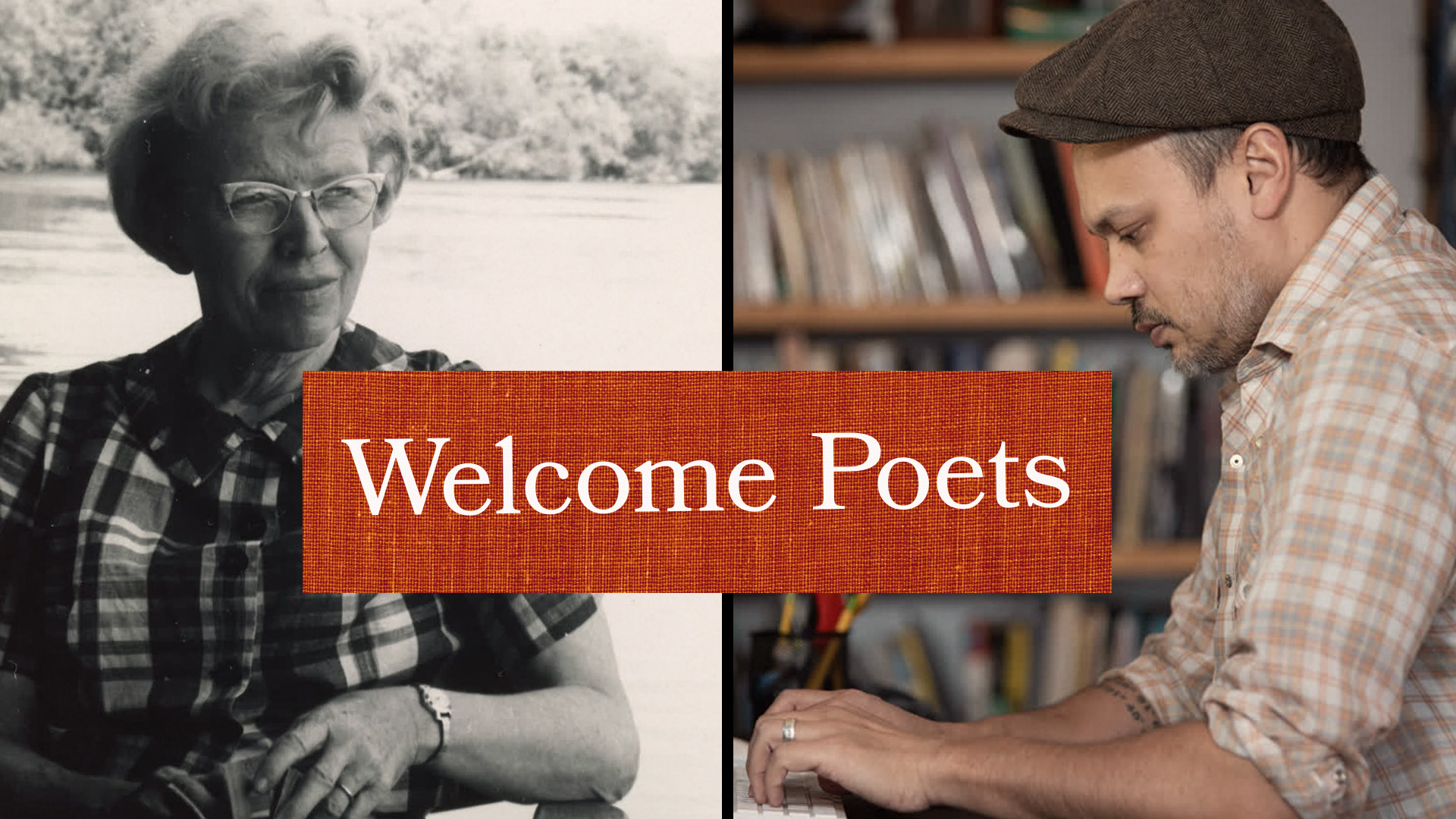
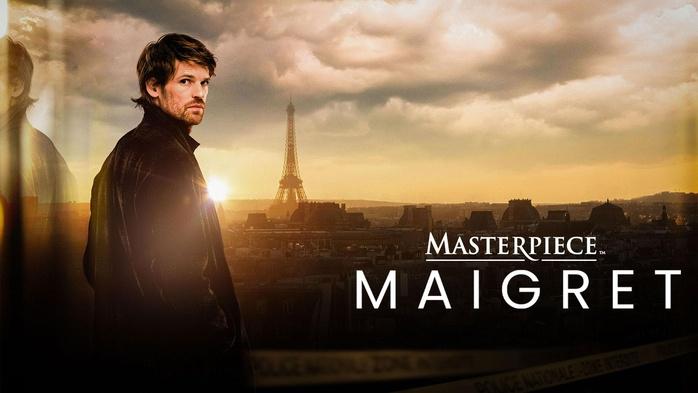

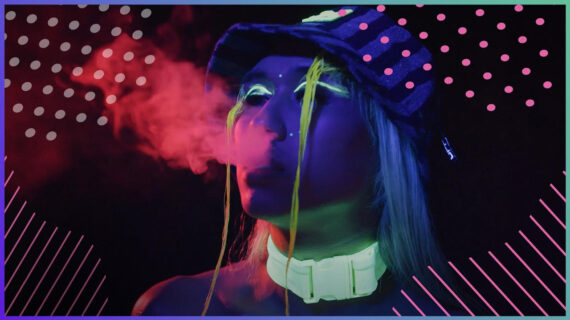

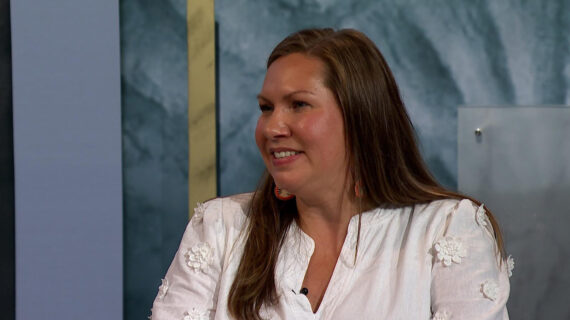
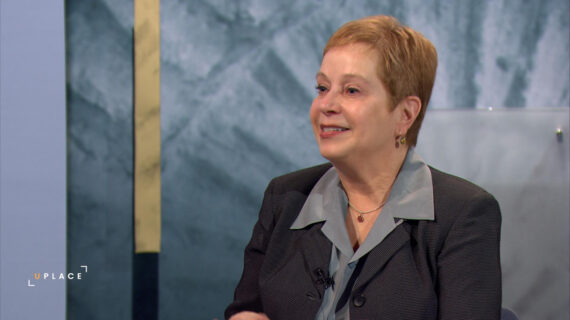
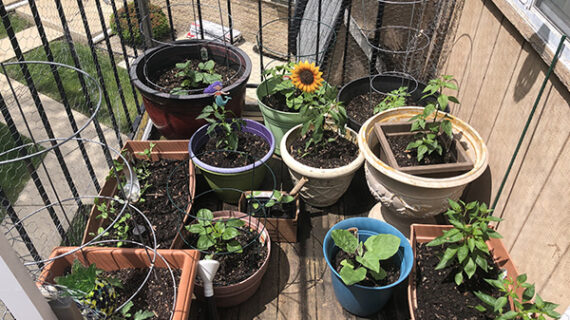
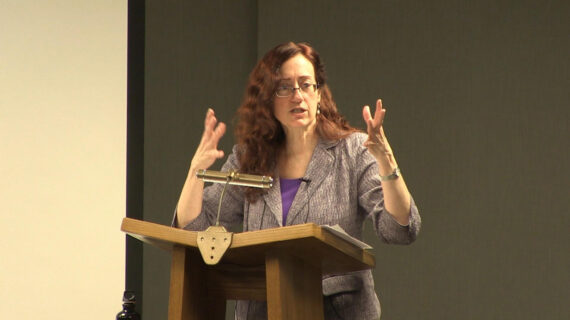

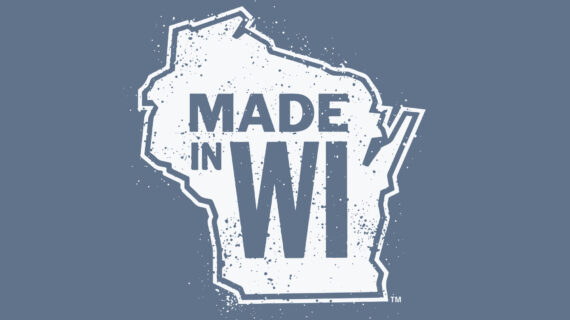

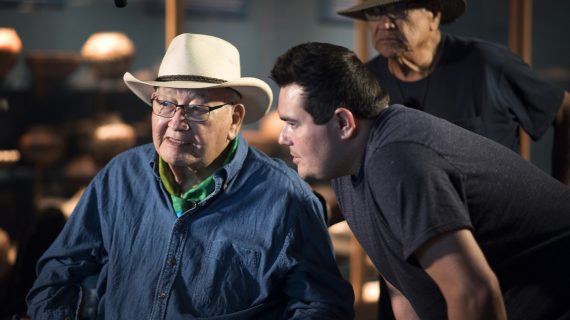

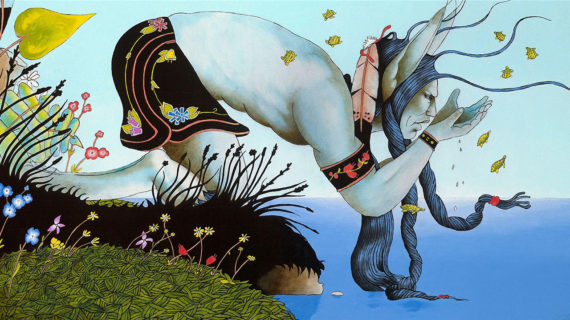

Follow Us